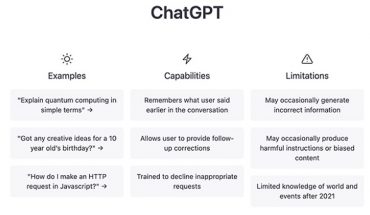
Photo by Damian Zaleski on Unsplash
Your LinkedIn feed is probably flooded with people expressing difficulty finding a job. There are so many layoffs happening across the board, leaving a pool of talented people seeking gainful employment. Most recently, CBC/Radio-Canada announced that it would be cutting 10% of its workforce amid a $125 million budget shortfall. Spotify confirmed plans this month as well to lay off 17% of its workforce in yet another round of job cuts, equating to about 1,500 people. According to Robert Half, 41% of workers in Canada are either looking for a new job or planning to do so before the end of the year.
But there are also many companies posting about hiring and looking for skilled people who fit their requirements. There’s a disproportionate number of people looking versus hiring, but also, in some cases, a disconnect. The right hiring candidates aren’t finding the right job seekers and vice versa.
There are ways to make yourself stand out and discover more fruitful opportunities. It’s easier said than done, of course. But sometimes, the simplest actions can make the biggest difference.
Reach Out and Ask for Referrals
One of the most important pieces of advice for job hunters is that you should never underestimate the value of referrals. According to Jobvite, employee referrals are actually the most effective way to fill a job opening: referred candidates are hired at a rate of 30% compared to the average rate of just 7% through other methods. Tap into your network of friends, former colleagues, and other members of your industry. Don’t be embarrassed to ask for information, and even for them to help connect you. Even if they have never worked directly with you in a professional capacity, they can vouch for you as a person. They may also have the inside track about jobs that aren’t yet public knowledge and can connect you to a hiring party before the job is even posted.
Use social sites like LinkedIn to connect with people with whom you might have crossed paths or with whom you think it’s worth becoming acquainted. Use common connections to reach out. You never know where it could lead.
Attend Social Events
As the old saying goes, deals are made on the golf course. And while the golf course might have been replaced in recent years with other types of social events, the same principal remains. Sure, so much can be done online and in a strictly professional setting. But if you still have credentials and contacts to gain invitations to events related to your industry, use them. Show up and network with others. Discuss your current situation and express your desire to get your feet wet again in the industry. A simple business card or phone number exchange and conversation over drinks or dinner can help you get a step closer. Apollo Technical, a talent solutions company, says that 80% of professionals believe networking is essential to their career success, and almost everyone surveyed said face-to-face meetings help build stronger, more long-term relationships.
Focus on Upskilling
While searching for a new job can be a job unto itself, try to carve out time to add a few new skills to your resume. There are tons of online courses you can take to build up your repertoire and educate yourself on topics of interest. Sites like Coursera, for example, might require a small investment for access, but there is a wealth of courses you can take for free on everything from the basics of Microsoft Excel to sales strategies and even coding and generative AI. Each course comes with a certificate you can share on LinkedIn to help boost your profile even more. It shows that you are working on improving yourself and learning new things. One of those skills could be exactly what helps get you hired for the next gig, even if it’s just a basic understanding that gets your foot in the door.
Be Aware of Applicant Tracking Systems
Recent online chatter centered around the “white text hack” on resumes, purportedly designed to help applicants get by the automated first round tracking system for resume sorting. The idea is to include keywords from a job description in hidden white text within the page of your resume. This isn’t visible to the naked eye but an electronic applicant tracking system (ATS) will pick it up and instantly think your resume is a perfect match for a position. However, many companies are aware of this trick and put resumes that use it in the discard pile.
Instead, try to actually use these keywords in tailored versions of your resume in a natural way – but only when your skills really do fit. This might mean massaging wording under your list of skills to match to what’s in the job description, like changing “CMS experience” to “experience with content management systems.” These small changes can help get yours flagged as a “keep” resume by the ATS, but legitimately so.
This is more important than ever considering that, according to studies cited by Select Software Reviews, almost all of the Fortune 500 companies use ATS platforms regularly, and 70% of large companies use them. Even if you’re looking for employment with a smaller company, you might still come across them. The cited studies indicate that 20% of SMBs use ATS and 75% or recruiters use such a tool to help review applicants.
Use LinkedIn As Much As Possible
While LinkedIn has turned into a site that’s about much more than just making business connections, it’s still one of the best sites for doing so. According to The Muse, 90% of recruiters use LinkedIn as a primary search tool; Randstad suggests the number is even higher at 97%. A profile there is effectively a miniature resume, complete with recommendations, a list of your skills (with others who have endorsed you for them), and a record of your recent posts. Stay active on the site, use the “open to work” banner for your profile photo, keep your profile consistently updated, and be engaged with topics of interest. The more visible you are, the more you look like an enthusiastic candidate who has something to offer a position.
Use Job Search Websites
There are job search sites at your disposal, many of which are free to sign up, and search for relevant jobs by type, location, and keywords, submit your resume, and even set up relevant e-mail alerts. Along with LinkedIn, you can use sites like Indeed and Ziprecruiter. With e-mail alerts, you’ll be notified when a job opening becomes available that fits your description or skill set. This helps you keep on top of job availability in real-time and take the time to tailor your resumes and cover letters accordingly. Don’t discount the usefulness of other social media sites as well: according to Zipdo, 73% of Millennials found their last position from a social media site.
Send a Thank You E-mail
It’s incredible how many people still don’t reach out with a thank you e-mail after an interview. Considering how difficult it is to even get an interview these days, it’s important to do anything you can to stand out. Send an e-mail thanking someone after an interview, noting key points from the talk, and advising of your excitement to hear back (never send a generic blanket message – employers see right through those.) Do this the day after the interview, or even the night of.
According to Indeed, a thank you e-mail shows “enthusiasm for the job and [leaves] an impression on the interviewer’s mind.” It can help give you an edge over other applicants, showing soft skills like listening and communication, says Indeed. The job search site also recommends using the thank you e-mail to mention details you might have forgotten to discuss in the interview, like other skills and abilities you possess, as well as to clarify certain points.
Don’t forget to include a personalized cover letter with every resume: according to Zipdo, there’s a 40% increase in getting hired when doing so.
Consider Using a Headhunter or Recruiter
A headhunter can help match job seekers with open positions and companies that might be a good fit. They can work for a company itself, on a contract for various companies, or be an independent who does the searching and connecting on your behalf. This can be a mutually beneficial relationship: it’s in the headhunter’s best interest to find you a gig since they often get paid on commission only when a successful hire is made. They can also help connect you to people, companies, and industries that might not have otherwise been on your radar.
A recruiter is a bit different in that they might have a broader specialty in a particular industry and can look at how your skills match a variety of jobs at many different companies. Chances are, they are more likely to work for an agency like Randstad.
Don’t Get Discouraged
You might send out dozens, even hundreds, of resumes and job applications and not hear back. You might get a single interview only to feel deflated when you don’t receive a call back or you’re told that you were not selected for the next round of interviews. Don’t get discouraged. The job market is tougher than ever nowadays. According to Zipdo, 61% of job seekers find the online job search process both time consuming and frustrating. You’re not alone. Every job posting receives an average of 250 resumes, notes Zipdo, but 80% of available jobs aren’t even publicized. That makes networking and making connections elsewhere even more crucial.
-30-
More on jobs and recruitment



